Everything You Wanted to Know About New Fitness Trends
We decode CrossFit, Tabata—and the other fitness buzzwords you've been hearing.
By Corrie Pikul
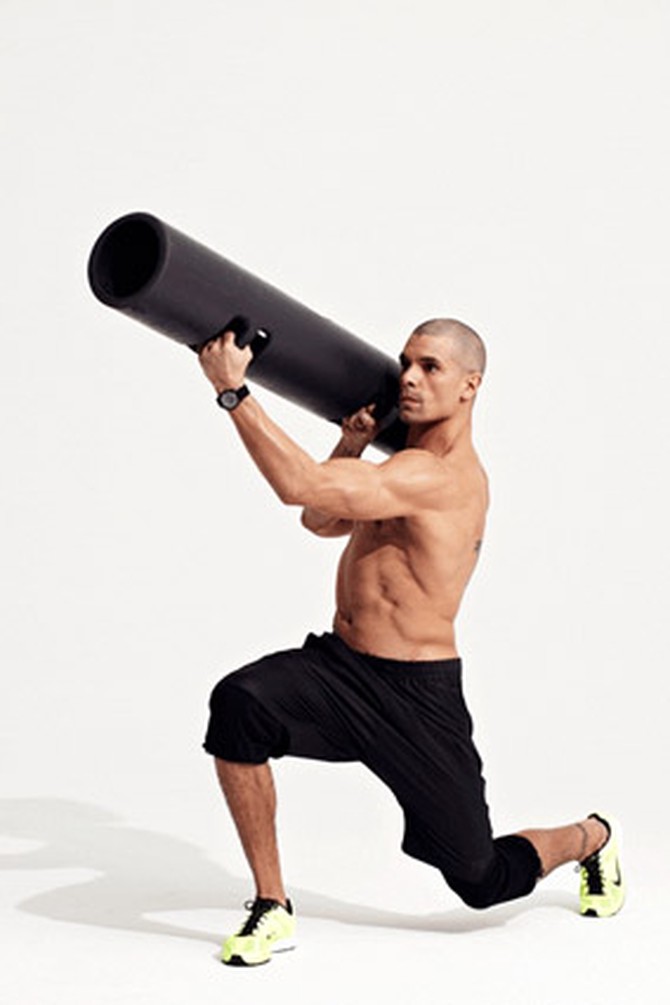
Photo: Courtesy of Equinox
The New "It" Weight: ViPR
What it is: The ViPR ("Vitality, Performance and Re-Conditioning") is a large rubber tube that weighs between 8.8 and 44 pounds. While it may not look like much when it's lying on the floor, fitness trainers use it to get their clients into amazing shape with any one of the 9,000 potential moves in which the ViPR is carried, tilted, dragged, thrown, flipped, dipped, swung and rolled. (See what we mean here.)
Why you should try it: ViPR training is based on flowing total-body moves, like "thread the needle," which incorporates arms, legs and the core (it's the sixth move in this slideshow). This kind of coordinated, 3-D action is considered "loaded movement training," and it helps not only build strength but also improve balance, agility and cardio fitness, explains Lisa Wheeler, national creative manager for group fitness at Equinox gyms, where the ViPR is used in classes and training sessions. And that makes your body better prepared for life's fitness challenges (like the 35-pound kid who wants to be picked up, or the tree limb that needs to be flung off the lawn).
Keep in mind: Because ViPR workouts involve the whole body, you won't be able to baby a sore muscle. Try this when you're feeling 100 percent.
Why you should try it: ViPR training is based on flowing total-body moves, like "thread the needle," which incorporates arms, legs and the core (it's the sixth move in this slideshow). This kind of coordinated, 3-D action is considered "loaded movement training," and it helps not only build strength but also improve balance, agility and cardio fitness, explains Lisa Wheeler, national creative manager for group fitness at Equinox gyms, where the ViPR is used in classes and training sessions. And that makes your body better prepared for life's fitness challenges (like the 35-pound kid who wants to be picked up, or the tree limb that needs to be flung off the lawn).
Keep in mind: Because ViPR workouts involve the whole body, you won't be able to baby a sore muscle. Try this when you're feeling 100 percent.
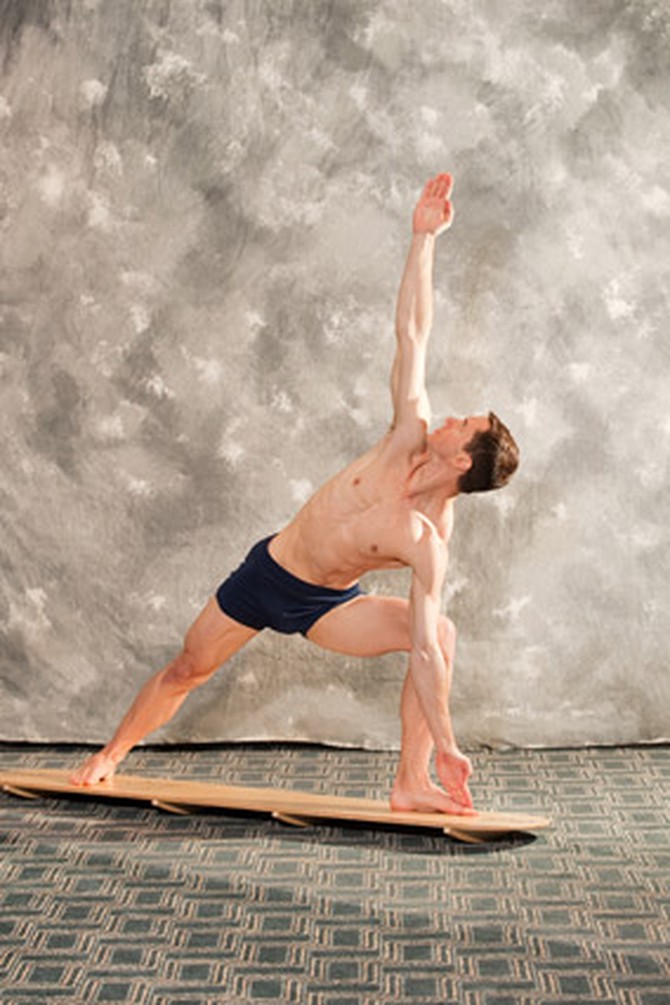
Photo of yoga champ Jared McCann by Lance Smith
The Fitness Prop You're Seeing Everywhere: Wobbly Boards
What it is: Paddleboards allow you to do yoga on the water, Surfset boards are used for "surfing" on land, and, for the most meta of workouts, you can use an Indo yoga board to practice yoga on the water...on land.
Why you should try it: Whether on sea—or on land that's made to feel like the sea—these boards provide an unstable surface that works muscles in your core and lower body as you try not to fall off. They're also a great way to improve your balance.
Keep in mind: Because your feet are your main connection to your board, you may find yourself gripping tightly with your toes and tensing your arches, says Dawn Ehman, a certified fitness instructor in Ocean City, Maryland, who teaches stand-up paddleboard yoga as well as Indo board yoga classes. This can lead to a slight burning feeling or post-workout soreness. Before getting on-board, Ehman suggests warming up by pointing and flexing your toes and rotating your feet to loosen your ankles.
Why you should try it: Whether on sea—or on land that's made to feel like the sea—these boards provide an unstable surface that works muscles in your core and lower body as you try not to fall off. They're also a great way to improve your balance.
Keep in mind: Because your feet are your main connection to your board, you may find yourself gripping tightly with your toes and tensing your arches, says Dawn Ehman, a certified fitness instructor in Ocean City, Maryland, who teaches stand-up paddleboard yoga as well as Indo board yoga classes. This can lead to a slight burning feeling or post-workout soreness. Before getting on-board, Ehman suggests warming up by pointing and flexing your toes and rotating your feet to loosen your ankles.
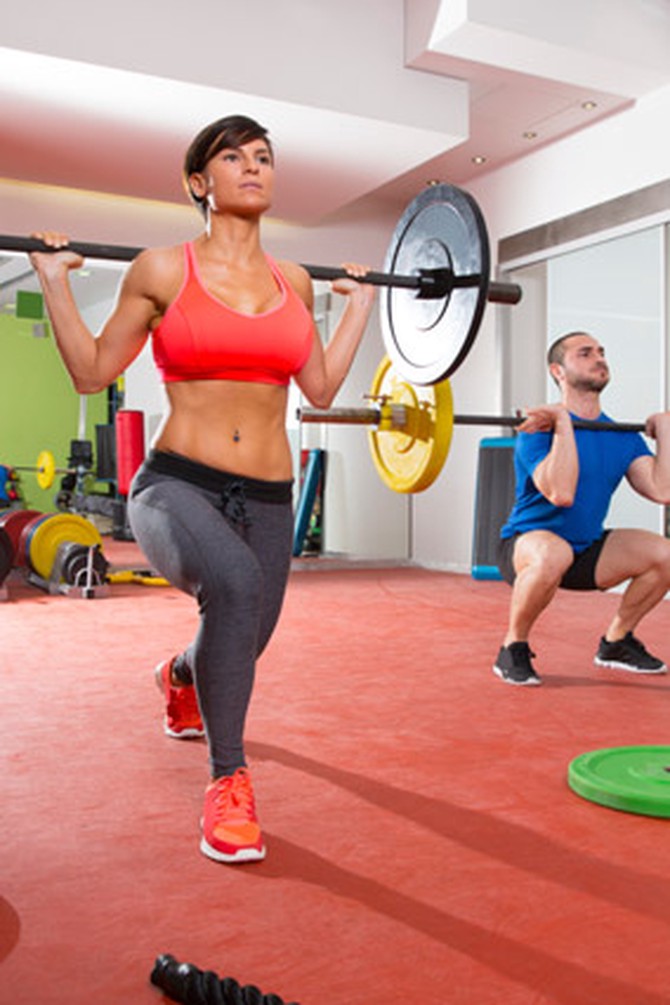
Photo: Thinkstock
The Regimen Turning Everyone into Addicts: CrossFit
What it is: CrossFitters often sound like they're speaking their own private language. Here's what it all means: They go to one of about 10,000 independently owned boxes (gyms), where they do a WOD (Workout of the Day) that involves combinations of Olympic lifts (e.g., power cleans), plyometric jumps and old-fashioned moves like pull-ups. In each WOD, they perform a certain number of exercises as fast as they can or complete as many reps as possible (AMRAP) in a specific amount of time. The coaches (trainers) at that box might also offer challenges like gymnastics, sprinting or lifting sandbags.
Why you should try it: The WODs are essentially HIIT (high-intensity interval training) routines that involve short bursts of heart-pounding activity with rests in between. As you've noticed while admiring your CrossFitting coworker's toned biceps, this gets results. But the real reason CrossFit has become so popular is that it simultaneously fosters a super-competitive yet super-supportive atmosphere. Everyone from the new mom to the out-of-shape CEO is encouraged to give every workout their all—even if that results in a little dry-heaving (vomiting in the box is relatively common).
Keep in mind: When pushing it to our limit, most of us tend to compromise form, which can lead to serious injuries. Look for box owners who are sticklers for good technique, and start with at least one introductory session.
Why you should try it: The WODs are essentially HIIT (high-intensity interval training) routines that involve short bursts of heart-pounding activity with rests in between. As you've noticed while admiring your CrossFitting coworker's toned biceps, this gets results. But the real reason CrossFit has become so popular is that it simultaneously fosters a super-competitive yet super-supportive atmosphere. Everyone from the new mom to the out-of-shape CEO is encouraged to give every workout their all—even if that results in a little dry-heaving (vomiting in the box is relatively common).
Keep in mind: When pushing it to our limit, most of us tend to compromise form, which can lead to serious injuries. Look for box owners who are sticklers for good technique, and start with at least one introductory session.
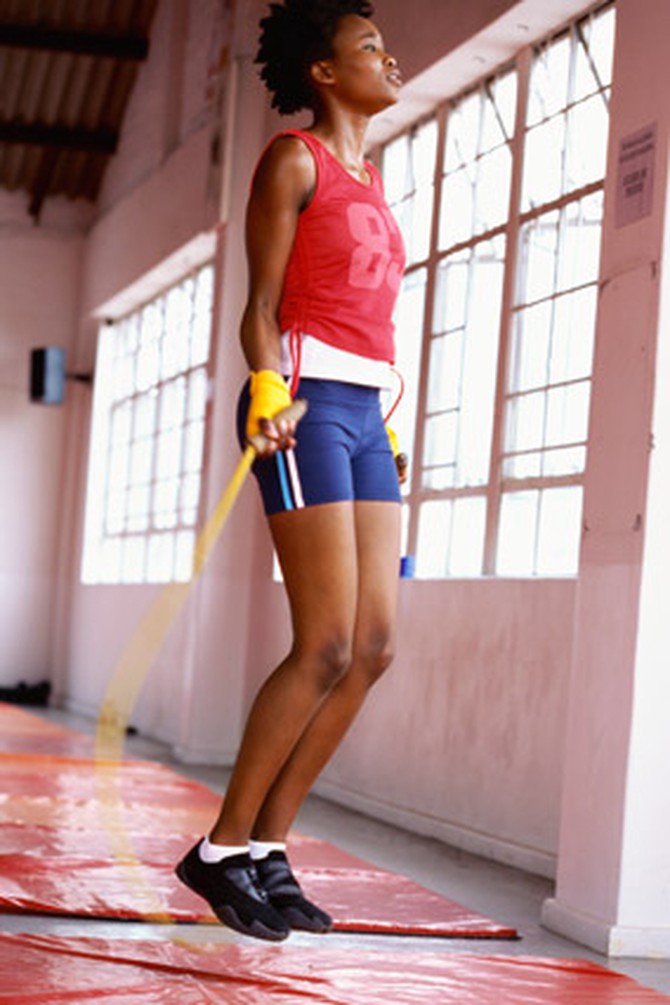
Photo: Thinkstock
The Best New Way to Do Your Standard Workout: Tabata
What it is: Think of the Tabata Protocol not so much as a fitness routine but more as a way to structure your sweat session: For four minutes, you alternate 20 seconds of intense effort with 10 seconds of rest. The idea comes from Japanese fitness researcher Izumi Tabata, who found while working with Olympic speed skaters that this short, grueling workout is surprisingly effective at building muscle and improving aerobic and anaerobic capacity. You can use this same format with any exercise: cycling, running, jumping rope, resistance training, dancing in your living room.
Why you should try it: A 4-minute Tabata-style workout of squat jumps burned 13.5 calories a minute and doubled calorie-burning potential for 30 minutes afterward, found Michele Olson, PhD, a professor of exercise science and a principal researcher at the Auburn University at Montgomery Kinesiology Laboratory. A new study from ACE found that by repeating a strength-building Tabata workout 4 times (for a total of 20 minutes), participants burned between 240 and 360 calories and built muscle from head to toe (here's the full routine).
Keep in mind: You literally need to make every second count, so make sure you're fit enough to work hard for those 20-second intervals.
Why you should try it: A 4-minute Tabata-style workout of squat jumps burned 13.5 calories a minute and doubled calorie-burning potential for 30 minutes afterward, found Michele Olson, PhD, a professor of exercise science and a principal researcher at the Auburn University at Montgomery Kinesiology Laboratory. A new study from ACE found that by repeating a strength-building Tabata workout 4 times (for a total of 20 minutes), participants burned between 240 and 360 calories and built muscle from head to toe (here's the full routine).
Keep in mind: You literally need to make every second count, so make sure you're fit enough to work hard for those 20-second intervals.
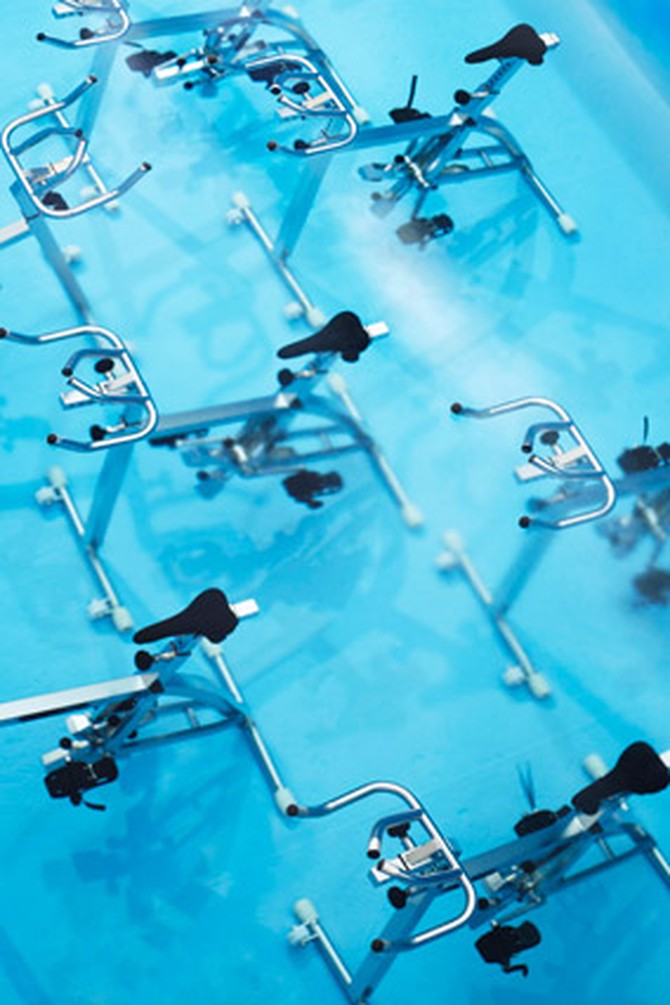
Photo: Marilou Daubé, AQUA Studio NY
The Most Exciting Class Mash-Ups: Aqua Spinning, Piloxing
What it is: They're the chocolate-and-peanut-butter equivalents of your favorite workouts: cycling and swimming (or treading water), Pilates plus kickboxing, tribal dance and yoga (as in Buti or bodyART). Known among fitness pros as "cross disciplining," these classes combine two styles of training into one workout.
Why you should try it: Aside from the novelty factor (bikes in a pool!), you'll be getting the best of both worlds. For example, you may feel you're using more of your core and arms while spinning against water resistance; your hamstrings may feel less tight after a cardio-yoga class if you're alternating mountain climbers with down-dogs; you'll definitely stay alert in Piloxing when dance moves are interspersed with upper-cuts and Roundhouse kicks.
Keep in mind: Even though aqua cycling doesn't require that you know how to swim and dance-yoga welcomes the inflexible as well as the super-bendy, total newbies might want to talk to the instructor one-on-one before class starts.
Next: 8 ways to get a better body in 30 minutes or less
Why you should try it: Aside from the novelty factor (bikes in a pool!), you'll be getting the best of both worlds. For example, you may feel you're using more of your core and arms while spinning against water resistance; your hamstrings may feel less tight after a cardio-yoga class if you're alternating mountain climbers with down-dogs; you'll definitely stay alert in Piloxing when dance moves are interspersed with upper-cuts and Roundhouse kicks.
Keep in mind: Even though aqua cycling doesn't require that you know how to swim and dance-yoga welcomes the inflexible as well as the super-bendy, total newbies might want to talk to the instructor one-on-one before class starts.
Next: 8 ways to get a better body in 30 minutes or less
Published 10/25/2013

